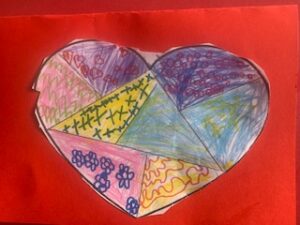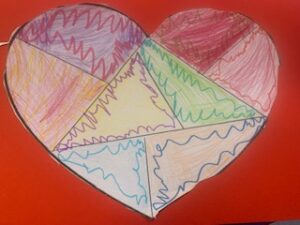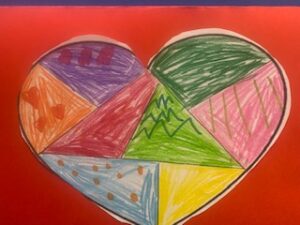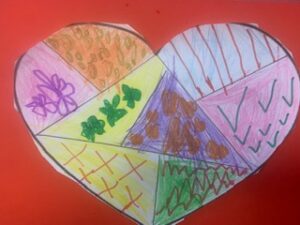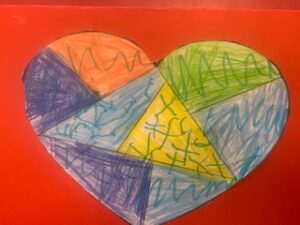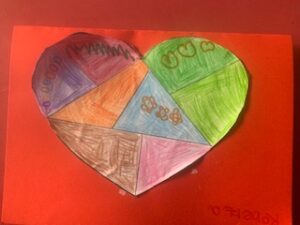Year 6 Europe……Eastern European Eggs & Holland’s Canal Houses
EASTERN EUROPEAN EGGS
ABOUT EGG DECORATING
Many cultures through the ages have DECORATED EGGS. Notably, it is a very popular modern tradition in the Slavic countries found in EASTERN EUROPE. These intricately detailed and colourful eggs are typically created through wax resist and dye baths. They are created and shared around the Easter holiday. The children created their decorated eggs using black card and oil pastels and crayons. As you can see, they gave their lines a slight curve to shown IMPLIED FORM and created shadows to give the impression of 3D.
The results are simply breath-taking….WOW!
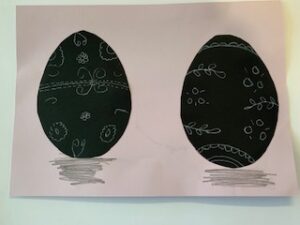
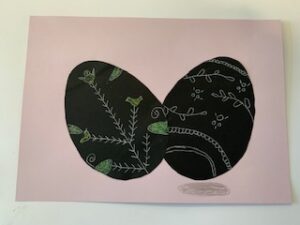

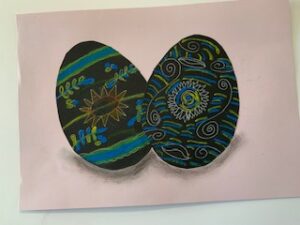
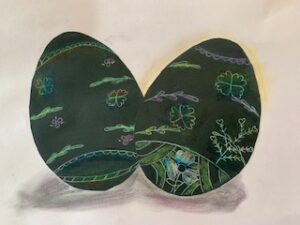
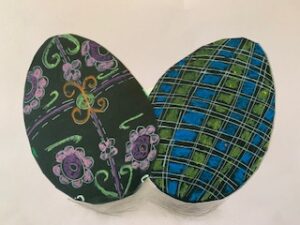
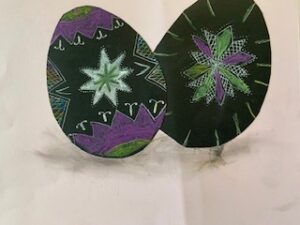
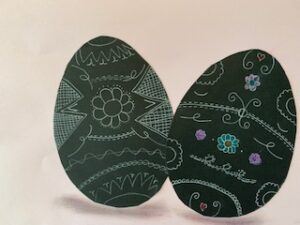
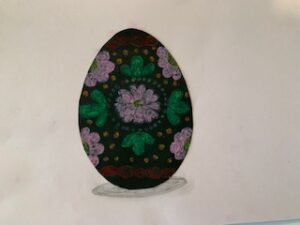
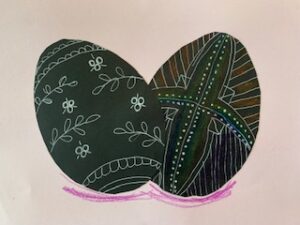
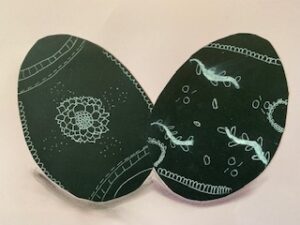
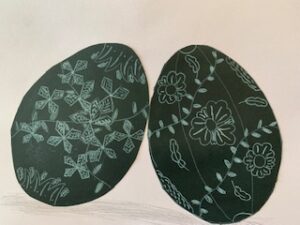

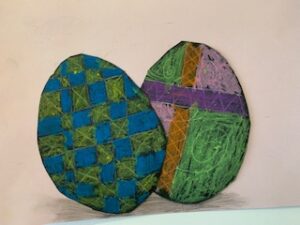
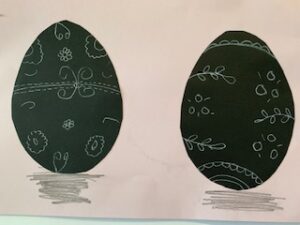
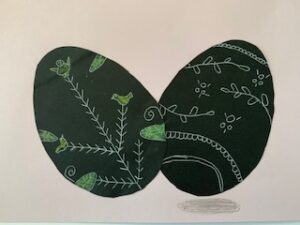
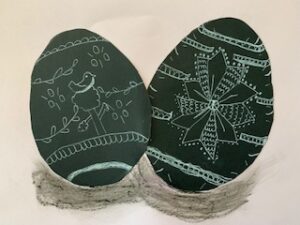


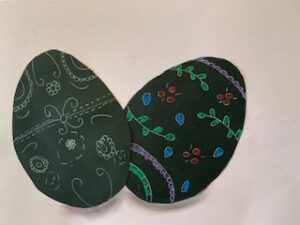

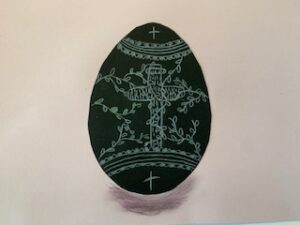
CANAL HOMES
The CANAL HOMES in HOLLAND are typically skinny, high and deep buildings that overlook a canal. The buildings typically serve multiple purposes: as homes, businesses and even storage units. Because of their proximity to the water, there is an increased risk of flooding, so the front door is not typically on the ground floor, but seven to nine steps above the street level. Canal houses traditionally featured a pulley system that was used to hoist up valuable goods to the attic so they wouldn’t be damaged by water.
The children created these stunning canal house pictures using Sharpies and watercolours…I think these are absoloutely amazing and really capture the essence of a busy canal city. Well done Year 6!
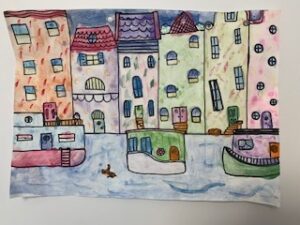
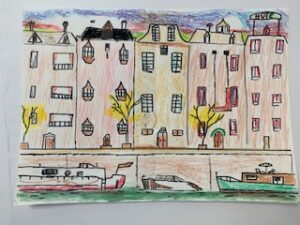
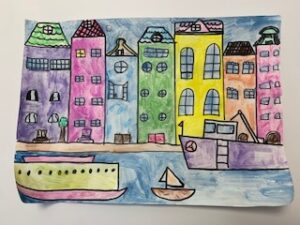
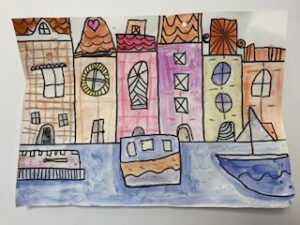

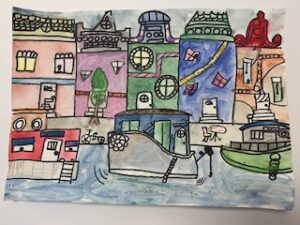
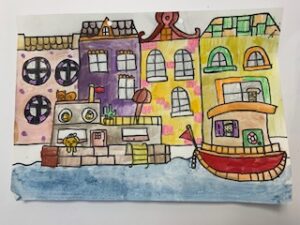
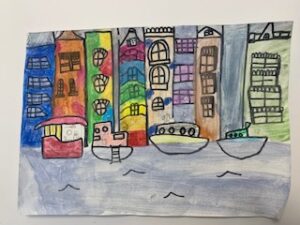
Year 5 Europe…. Swiss Ski Chalets
Swiss CHALETS, a style of architecture seen in SWITZERLAND, are as well known as the country’s famous chocolate. These homes dot the landscape of the Swiss Alps, a large mountain range that runs through Switzerland. Long, sloping roofs that drip with snow, exterior beams and outdoor decks popularize these dwellings. Colourful paint and decorative shutters add a special uniqueness to this style of architecture.
The children really challenged themselves for this project. The used watercolours to create their snowy backdrop and used a range of media and collage techniques to created these distinctive chalets. Even the wooden shutters on their windows open and close….now that is real attention to detail!

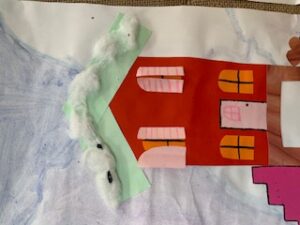
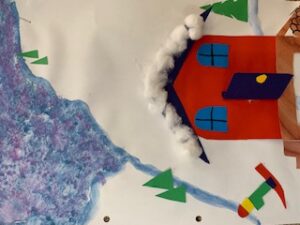

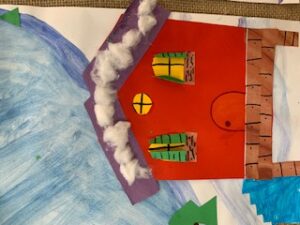


Year 4 Europe…..Bavarian Window Box & the Eiffel Tower
BAVARIAN WINDOW BOXES
BAVARIA is a state in GERMANY, officially called the Free State of Bavaria, that is known for its charming architecture and beautiful landscape. This part of Germany is bordered by the Alps mountain range. Many buildings in this area feature timber framing which allows you to see the beams that the home is made from on the outside. Homes and buildings in the area often have many wooden or iron window boxes that are filled with bright and colourful flowers.
The children put a great deal of time and effort into creating their own window boxes, in the Bavarian style, and it was well worth it because the results are simply stunning.

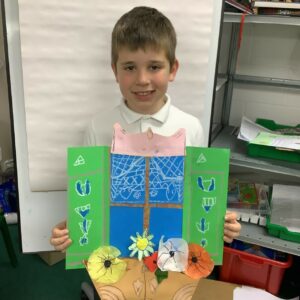
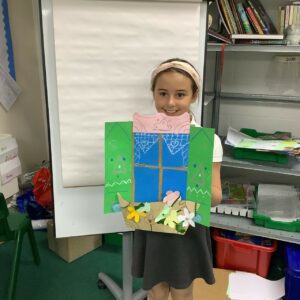
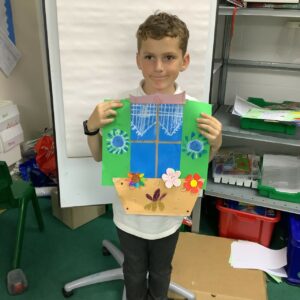
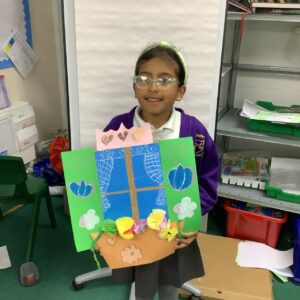
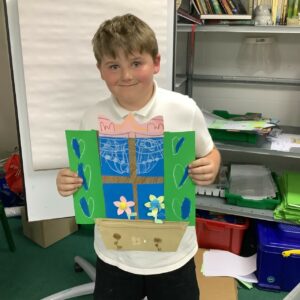
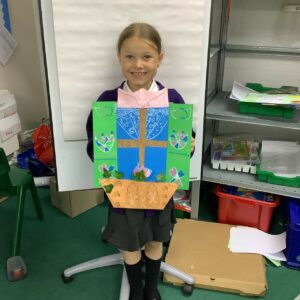
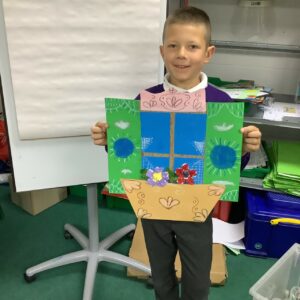
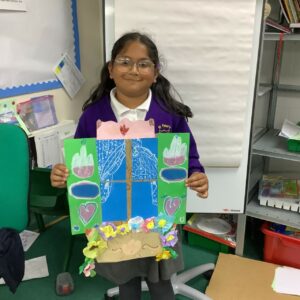
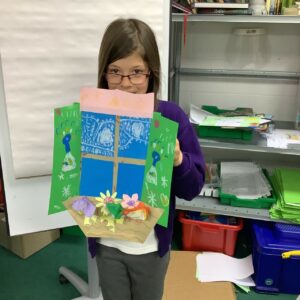
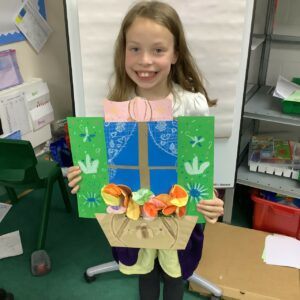
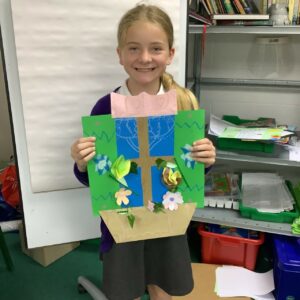
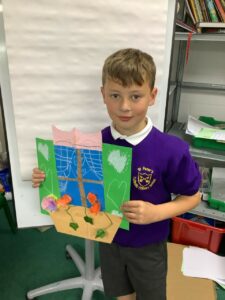

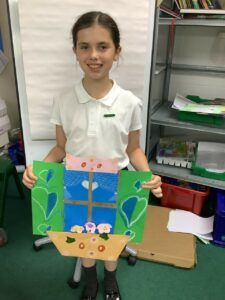
The EIFFEL TOWER was built in 1889 to serve as an entrance to the World’s Fair in Paris, FRANCE. It was originally supposed to be torn down after 20 years, but is still standing today and is one of the most recognizable structures in the world. Nicknamed the “Iron Lady”, the Eiffel Tower stands tall at 1,063 ft. (324 metres) in height and was at one time the tallest building in the world. However, did you know that it’s not exactly that tall all year round? Due to the natural ability of metal to expand when warm and contract when cold, in the winter the Eiffel Tower is about six inches shorter than it is in the summer. The children learnt about symmetrical balance in order to sucessfully create their own Eiffel Tower. The children then designed their own ‘Blueprint’ background using parallel and perpendicular lines. What an amazing project that combined art and maths, maybe we will inspire future architects!
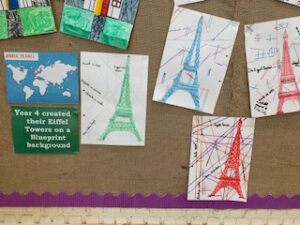

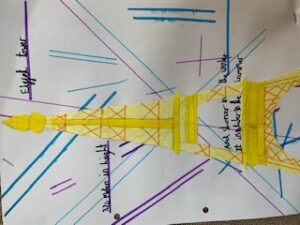
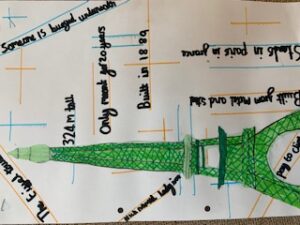
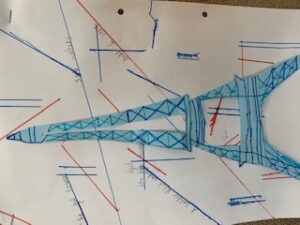
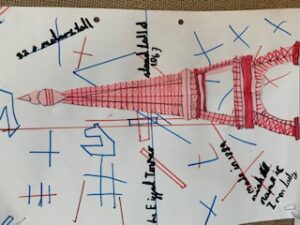
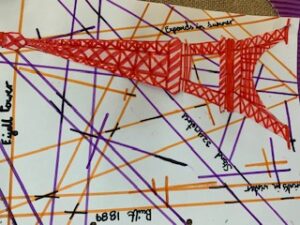
Year 3 Europe – The Queen’s Guard and MediterraneanTerraced Houses
The QUEEN’S GUARD (also called the King’s Guard when the reigning monarch is male) are the military regiments responsible for guarding the royal residences in the UNITED KINGDOM, including Buckingham Palace in London. The usual uniform of a Queen’s Guard is a red coat and tall bearskin hat.
The children worked very creatively on this project. First they carefully painted their Union Jack background, ensuring it was symmetrical. After that they used collage to make their Queen’s Guard before assemling it all together. I just love the expressions on their faces and how some of them have very impressive moustaches.
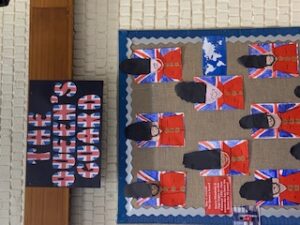
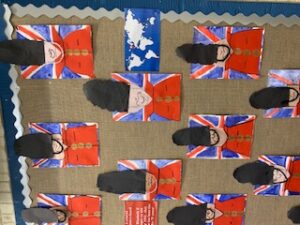



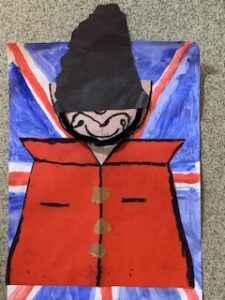

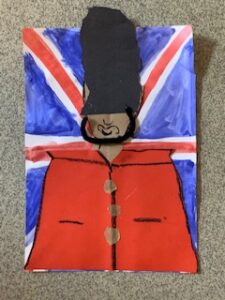
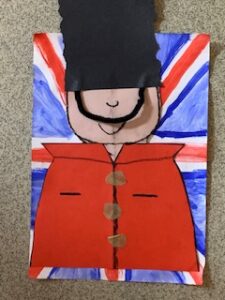
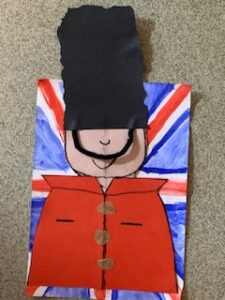

CINQUE TERRE, which translates into “five lands” is a group of five island villages, featuring vibrantly coloured homes in northwestern Italy. The landscape of the islands is steep and rugged with rocky cliffs. To be able to build homes on the cliffs along the coastline of the Ligurian Sea, it was necessary to build TERRACES. Terracing means cutting slopes into a series of receding, flat platforms to give a surface for buildings to be built upon. Without buildings on top, terracing resembles steps, with the widest terraced area near the bottom of the slope and the smallest terraced area at the top. SANTORINI is a popular island in Greece that was formed by volcanic eruptions. In Santorini, low cubical buildings made from local stone are built along the rocky cliffs. Many are either white or coloured with volcanic ash. The children loved creating their terraed house and as you can see the results are simply stunning….makes me wish I was going on holiday!
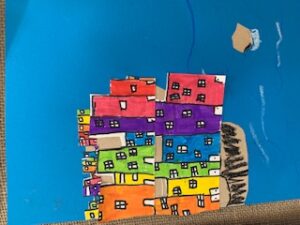
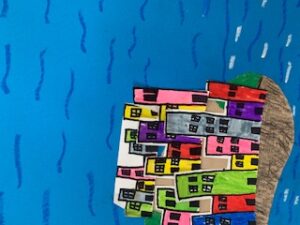
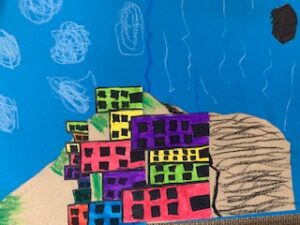
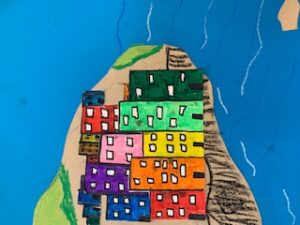
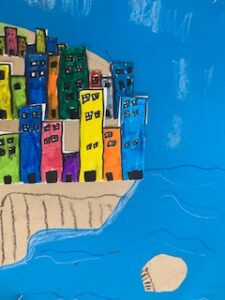
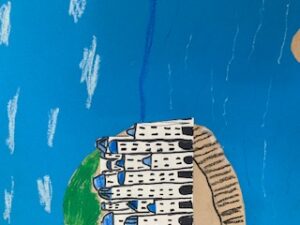
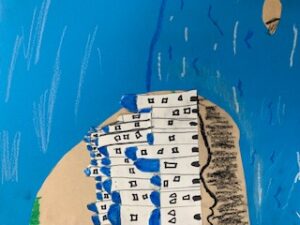
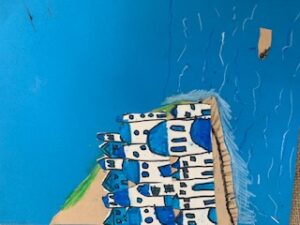
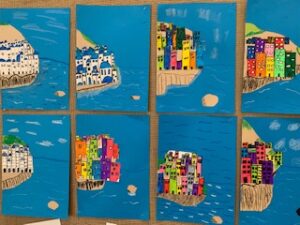
Year 2 London Buses
DOUBLE-DECKER buses are a popular mode of transportation all over the world. The second floor of seating means that more people can ride at once and get to where they need to go. Depending on the model of bus, usually around 90 passengers can fit on a double-decker bus. The most iconic double-decker buses are the bright red buses that take commuters and tourists all around LONDON. Year 2 children created a skyscraper background before making their London Double Decker Buses. Some of the buses even have passengers on them!
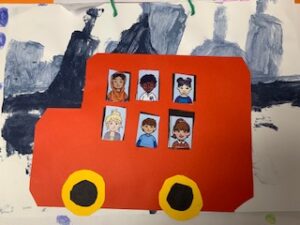
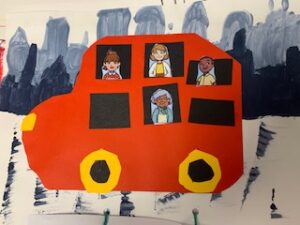
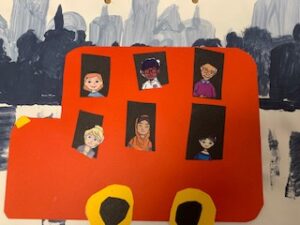
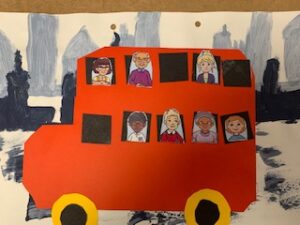

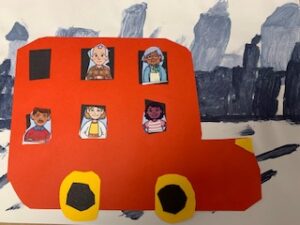
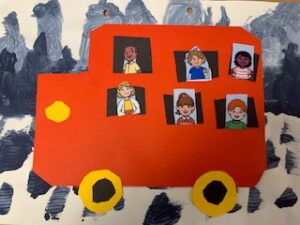
Year 1 – Europe ….. Ferdinand the Bull & Icelandic Turf House
The children watched a film clip of Ferdinand the Bull and the created their own bulls and even named them. Each bull has their own unique expression as it enjoys sitting in the sunshine surrounded by nature.
They are all so fabulous!
Which one is your favourite?….It’s hard to choose isn’t it?















TURF HOUSE OF ICELAND
Turf houses are a traditional style of home found in ICELAND. The turf house came about for two reasons: a harsh climate and the lack of available wood for building. Iceland was lacking in large trees suitable for building when settlers arrived, so they had to get creative with building materials and conserve the timber that they did have. Instead of building the entire home out of wood like their Scandinavian neighbours, they instead made a foundation out of stone, built a wooden frame and then used the abundantly available turf to insulate the homes and even put it on top of the roof! The byproduct of turf homes were naturally insulated homes that offered protection from very cold winters, while also remaining cooler in warmer months.
The children learnt all about these amazing homes before creating their own, using mixed media including Sharpies, crayons and painted paper for the turf roof. If you look closely you may get a sneak peak inside these Turf houses.








Reception – Europe German Garden Gnomes & Swedish Dala Horses
GARDEN GNOMES
GARDEN GNOMES are small figurines often used to decorate gardens. Some of the first gnome statues to be mass-produced came from GERMANY in the 1870s. In Germany, gnomes were originally tied to traditional stories and superstitions and were believed to help around the farm and the mines. They later became household decorations. Gnome statues range in size and style and have been made from materials like wood, stone and clay. They usually feature a traditional pointy red hat. The children listened so well and followed the instructions to create these delightful gnomes. Each one has it’s own personality that you can see from their expression. It would be impossible to choose a favourite. Well done Reception children.










DALA HORSES
Dalecarilian horses, or DALA HORSES for short, are traditional carved Swedish wooden statues. They are named after the province they originated in, Dalecarlia, SWEDEN. Dala horses were originally carved as children’s toys, but have now come to be recognised as a symbol for Sweden. The most common form of the Dala Horse is a red body with white, green, yellow and blue saddle and harness.
The children created a ‘repeating pattern’ background and then decorated their own Dala horses and glued them onto the background. They look totally fab!







Global Art Passport….we have arrived in EUROPE
The next stop on our art tour is EUROPE!
Every year group will be participating and you will be able to see incredible art from Russia, Sweden, Iceland, Holland, Germany and so much more….. we will even stop off in Great Britain!
Reception Art – Daffodils for St David’s Day
Reception children enjoyed learning about daffodils. They know that they are a symbol of Wales and they listened to the first verse of William Wordsworth’s famous poem about Daffodils.
DAFFODILS
I wandered lonely as a cloud
That floats on high o’er vales and hills,
When all at once I saw a crowd,
A host, of golden daffodils;
Beside the lake, beneath the trees,
Fluttering and dancing in the breeze.
The children then did their own observational drawing of a daffodil, using oil and chalk pastels. Every daffodil was so good that they were ALL displayed in the hall.
Very well done!
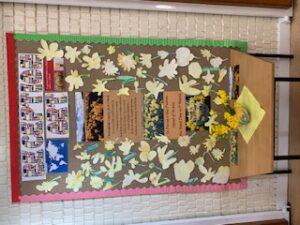
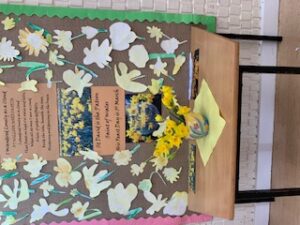
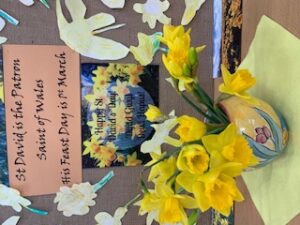
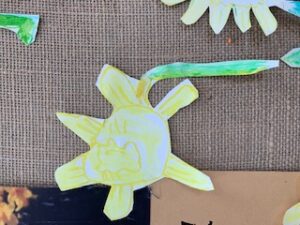

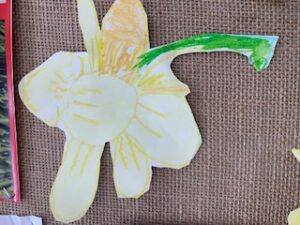
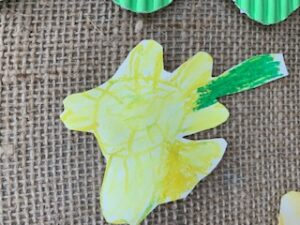
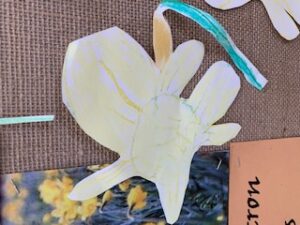
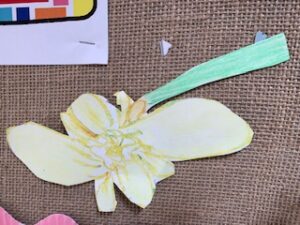
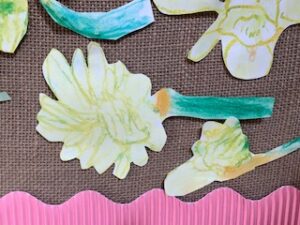
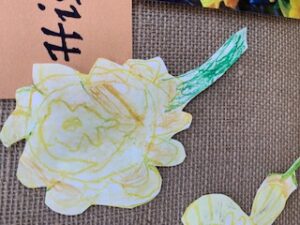
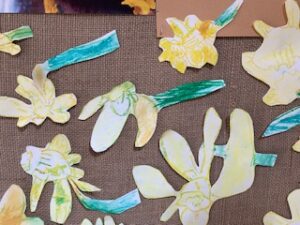
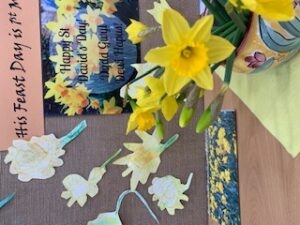
LOVE IS IN THE AIR! Recpetion Art
RECEPTION CHILDREN WERE THINKING ABOUT THE PEOPLE THEY LOVE AND THE REASONS THEY LOVE THEM AS THEY CREATED THESE STUNNING VALENTINE CARDS. THEY USED MIXED MEDIA OF COLOURED PENCILS AND FELT TIPS…WILL YOU BE LUCKY AND GET A CARD ON THE 14TH FEBRUARY?
